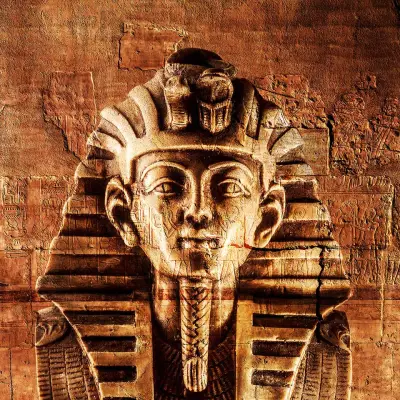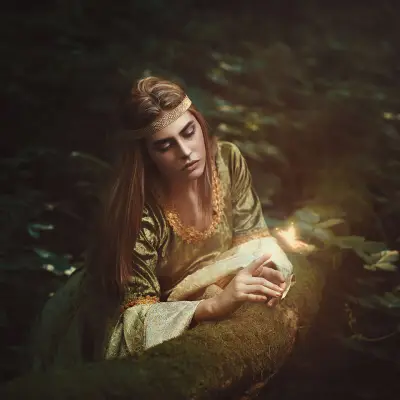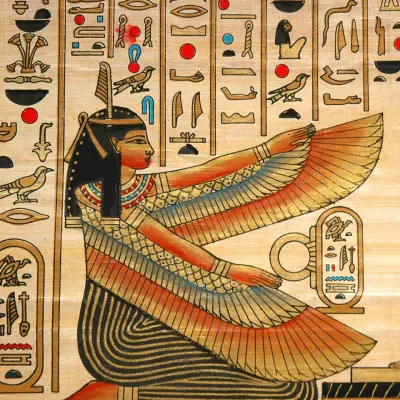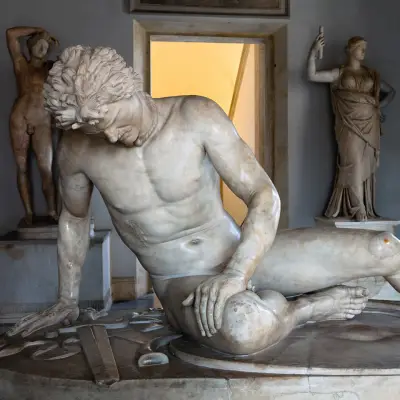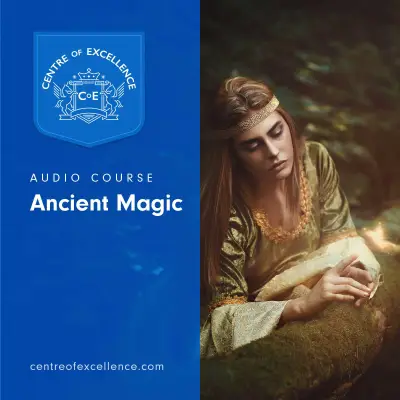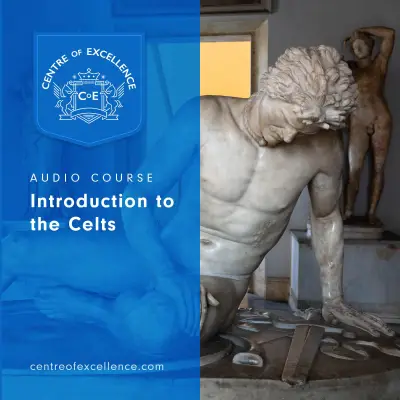If you’ve ever been curious about the gods of Japan, one name that frequently comes up is Hachiman. Often referred to as the Japanese god of war, Hachiman’s presence stretches far beyond battlefields, representing protection, spiritual strength, and national identity.
Let’s take a closer look at who Hachiman is, what powers and symbols are associated with him, and why his influence continues to echo through Japan’s religious and cultural landscape.
Jump to:
- Who Is Hachiman in Japanese Mythology?
- Hachiman’s Myths
- The Role of Hachiman in Japanese Storytelling
- What Powers Did Hachiman Possess?
- Symbols Associated with Hachiman
- Hachiman's Lineage and Connections
- Why Is Hachiman Special?
- Hachiman in Modern Culture
- Hachiman’s Worship and Legacy
- Frequently Asked Questions About Hachiman
- Study Japanese Mythology for £29
Recommended for you!
Best SellersWho Is Hachiman in Japanese Mythology?
Hachiman is a unique figure in Japanese mythology, a blend of Shinto deity and Buddhist protector. Originally a Shinto kami (a type of divine spirit), Hachiman eventually became a syncretic deity worshipped in both Shinto and Buddhism. He’s primarily known as the Hachiman god of war, a divine protector of warriors, particularly the samurai class, and is still widely worshipped in Japan today.
But his character isn’t limited to conflict. Hachiman is also a guardian of communities, a bringer of peace, and a symbol of devotion to the Japanese people and their land.
Hachiman’s Myths
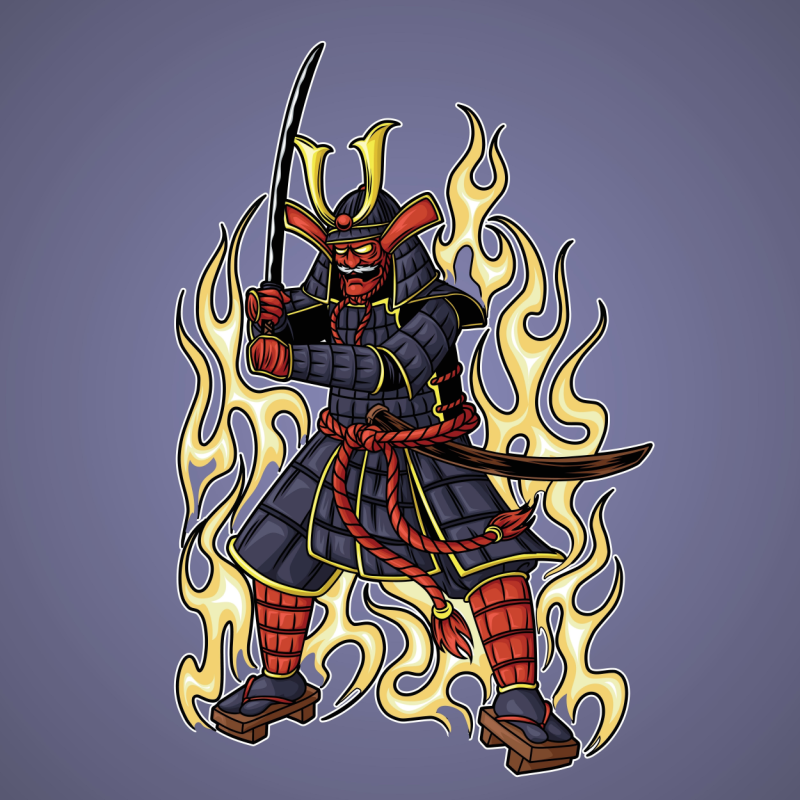
The mythology surrounding Hachiman is deeply intertwined with Japan’s imperial legacy. These stories eveal how deeply he is woven into the fabric of Japanese national identity:
The Deification of Emperor Ōjin
One of the central myths of Hachiman is his connection to Emperor Ōjin, the 15th Emperor of Japan. According to tradition, after Ōjin’s death in the 4th century CE, his spirit was deified and became Hachiman, a powerful protector of Japan and its people. This transformation from emperor to divine guardian helped link the imperial family with divine authority.
Empress Jingū’s Divine Campaign
Hachiman’s influence is also seen in the legendary tale of Empress Jingū, Emperor Ōjin’s mother. She is said to have led a successful military expedition to the Korean Peninsula, guided by divine forces believed to include Hachiman. In this story, Hachiman’s spiritual guidance is key to her victory, reinforcing his role as a protector of the Japanese realm even before he was formally recognised as a deity.
The Birth of a National Protector
Another myth tells of Hachiman’s divine appearance at the Usa Shrine in Kyushu, where he declared his support for the construction of the Great Buddha at Tōdai-ji Temple in Nara. This act earned him recognition as a guardian of the entire nation and its spiritual wellbeing. The event symbolised his broader role as a unifying figure in Japanese religious life, bridging Shinto and Buddhist traditions.
The Role of Hachiman in Japanese Storytelling
In traditional Japanese storytelling, Hachiman is often portrayed as a protective and watchful figure, someone who oversees both military affairs and the moral conduct of warriors. His influence features strongly in medieval texts and folk tales, particularly during the Heian (794–1185) and Kamakura (1185–1333) periods, when the samurai class rose to prominence.
As a patron of the samurai, Hachiman represented loyalty, discipline, and honour. Stories involving him often revolve around moments of conflict where his guidance or blessings lead to victory or justice.
What Powers Did Hachiman Possess?
Hachiman’s powers are broad, protective, and deeply spiritual, reflecting his dual identity as both a god of war and a symbol of peace in Japanese mythology:
- Divine Protection and Military Guidance: As the Hachiman god of war, his most recognised role is guiding and protecting warriors, especially the samurai. He’s believed to bestow courage, discipline, and strategic clarity in times of conflict. His spiritual strength often turns the tide in favour of those who act with honour.
- Guardian of the Nation and Communities: Beyond the battlefield, Hachiman is a protector of Japan itself. From emperors to farmers, people seek his blessings for safety, success, and harmony. He’s said to shield towns and families from natural disasters, disease, and spiritual unrest.
- Spiritual Insight and Moral Oversight: Though he’s a martial deity, Hachiman also represents ethical conduct and justice. His presence encourages righteousness, loyalty, and honourable action. Warriors often prayed for the strength to fight with integrity.
- Support of Buddhist Endeavours: Uniquely among Shinto deities, Hachiman is embraced in Buddhist traditions too. He famously endorsed the construction of the Great Buddha at Tōdai-ji, which elevated his status as a spiritual force across religious lines. His powers, therefore, extend into the realms of enlightenment and sacred support.
- Peace Through Strength: Rather than promoting conflict, Hachiman stands for peace maintained through preparedness. His powers are invoked to protect what is worth preserving: people, values, and balance.
Symbols Associated with Hachiman
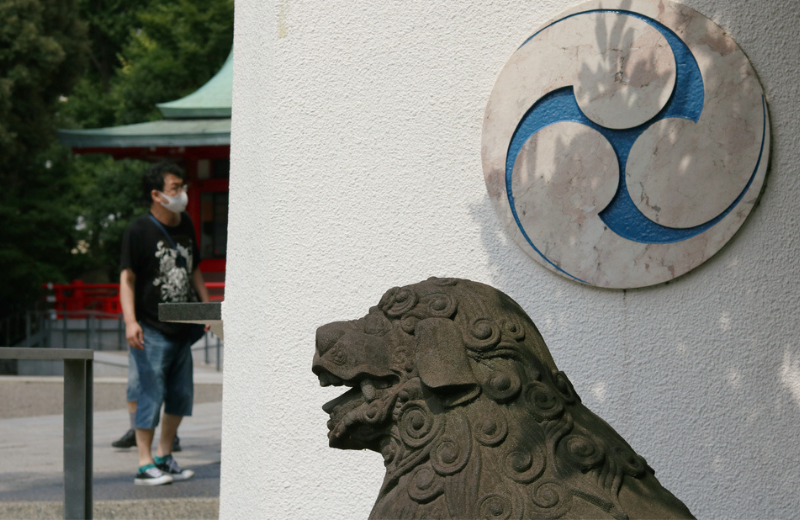
Symbols tied to Hachiman reflect his complex nature: part warrior, part guardian, part spiritual protector. They offer insight into his influence and the qualities people revere in him:
- The Bow and Arrow: The most iconic symbol of Hachiman, the bow and arrow stand for martial skill, vigilance, and readiness. They evoke his warrior spirit and connection to the samurai class. At many shrines, banners with archery motifs honour this connection.
- The Dove: A surprising symbol for a war god, the dove represents peace, divinity, and Hachiman’s gentle watchfulness. According to legend, doves appeared when he manifested at the Usa Shrine. Today, they symbolise his protective and reconciliatory nature.
- White Banners: In shrine rituals and processions, white banners often symbolise Hachiman’s presence. They suggest purity of purpose and his divine guidance in both military and civic matters.
- Armour and Warrior Icons: Images of helmets, swords, or samurai armour are frequently found in shrines dedicated to him. These symbols reflect the respect Hachiman commands from Japan’s warrior tradition, representing honour, bravery, and service.
- Shrines on Hills or Strategic Sites: Hachiman shrines are often found in elevated or significant locations, such as near castles or former battlefields. These placements reflect his role in guarding important places and watching over regions with spiritual vigilance.
- Colours: Red, White, and Gold: These colours are commonly used in Hachiman-related rituals. Red symbolises courage and protection, white purity and devotion, and gold divine authority and spiritual strength.
- Kanji 八幡 (Hachiman): His name combines the characters for "eight" (八) and "banners" (幡), referencing the eight heavenly banners that appeared at his divine revelation. These banners are a sacred symbol of his presence and celestial origin.
Hachiman's Lineage and Connections
Hachiman’s mythical roots lie deep within Japanese tradition. He’s believed to be the deified form of Emperor Ōjin, making him both a historical and divine figure. His connection to Empress Jingū adds further depth, blending imperial lineage with mythical storytelling.
He’s also associated with the sun goddess Amaterasu, as all emperors were believed to be her descendants. This places Hachiman within the broader framework of Shinto cosmology, linking him to Japan’s origin myths and spiritual ancestry.
Why Is Hachiman Special?
Hachiman stands out because he represents a fusion of roles. He’s both a military deity and a peaceful guardian. He crosses religious boundaries, being worshipped in Shinto shrines and Buddhist temples alike. His worship stretches across Japan, from rural villages to urban centres.
But more than that, Hachiman embodies a concept that many Japanese people hold dear: the idea of defensive strength. He isn’t a god who demands conquest. He’s a deity who values loyalty, community, and spiritual resilience.
Hachiman in Modern Culture
In today’s world, Hachiman still appears in popular culture, including anime, manga, and video games. You might recognise his name from the anime My Teen Romantic Comedy SNAFU, where the main character, Hachiman Hikigaya, is often described as nihilistic and a loner.
While this fictional Hachiman is very different from the god, the choice of name hints at the god’s reputation for isolation and silent strength. Some interpretations of the deity even suggest a reserved and distant personality, reflecting the way he operates behind the scenes rather than taking centre stage.
Hachiman’s Worship and Legacy
Hachiman represents protection through spiritual power. His name is often translated as "God of Eight Banners," a reference to the eight heavenly banners said to have marked his divine appearance.
Shrines dedicated to him, such as the famous Usa Jingu in Kyushu, Tsurugaoka Hachimangu in Kamakura, and Iwashimizu Hachimangu in Kyoto, remain popular sites of worship today. People visit the Hachiman shrine to seek his protection, success in exams, safety in travels, and blessings for children and families.
There are over 25,000 Hachiman shrines in Japan, making him one of the most worshipped deities in the country. His shrines are often situated near battle sites, castles, or samurai settlements, representing his long-standing relationship with Japan’s warrior spirit.

Frequently Asked Questions About Hachiman
Is Hachiman evil?
Hachiman is not considered evil. In fact, he is viewed as a guardian deity who watches over the Japanese people. Though he is associated with warfare, his purpose is protection and defence rather than aggression or destruction.
How old is Hachiman?
Hachiman is believed to have originated as the deified spirit of Emperor Ōjin, who lived in the 3rd to 4th century CE. This places Hachiman’s worship at over 1600 years old, making him one of the oldest continually venerated deities in Japan.
What is the weapon of the Hachiman god?
Unlike some mythological figures who wield specific weapons, Hachiman is not closely associated with a single item of warfare. Instead, he represents the idea of martial strength and readiness through the symbolism of the bow and arrow. His real “weapon” is his spiritual power and influence.
What animal represents Hachiman?
The dove is the primary animal associated with Hachiman. While this may seem unusual for a war deity, it highlights his role as a guardian and bringer of peace, not merely a god of battle.
Is Hachiman nihilistic?
The god Hachiman is not nihilistic. He represents protection, honour, and sacred duty — values far removed from nihilism. However, this label is often applied to fictional characters named after him who express pessimistic or detached worldviews.
Recommended for you!
Best SellersStudy Japanese Mythology for £29
Interested in exploring more about ancient Japanese beliefs, traditions, and divine figures like Hachiman? The Introduction to Japanese History and Culture Diploma Course from Centre of Excellence is the perfect place to start. For a discounted price of £29, you'll learn about he spiritual stories, practices, and philosophies that shaped Japan’s past and continue to influence it today.

